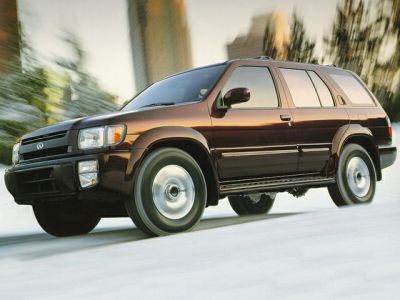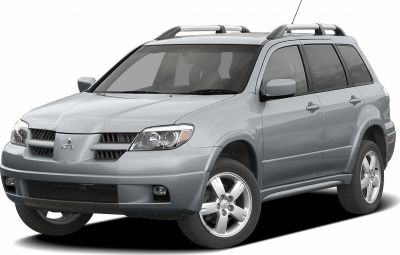 1995 Ford Explorer II Dimensions, Size & Specs
1995 Ford Explorer II Dimensions, Size & SpecsMeasurements of the 1995 Ford Explorer II, engineered for optimal performance and comfort
| Dimensions | |
|---|---|
| Length: | 4429-4790 mm174.4-188.6 in14.5-15.7 ft |
| Width: | 1783-1790 mm70.2-70.5 in5.8-5.9 ft |
| Height: | 1699-1800 mm66.9-70.9 in5.6-5.9 ft |
| Trunk Capacity: | 767-1206 liter27.1-42.6 cu ft |
| Trunk Capacity (Max): | 1270-2311 liter44.8-81.6 cu ft |
| Weight Specifications | |
| Curb Weight: | 1670-2010 kg3682-4431 lbs |
| Maximal permitted Weight: | 2200-2600 kg4850-5732 lbs |
| Tire Specifications | |
| Tire Sizes: |
|
The Ford Explorer II, produced from 1995 to 2003, is a mid-size SUV designed to combine versatile interior space with capable performance. This generation of the Explorer features varying length measurements ranging from 4429 mm (174.3 inches) up to 4790 mm (188.6 inches), catering to diverse model trims and design updates throughout its production cycle. The vehicle's width ranges narrowly between 1783 mm (70.2 inches) and 1790 mm (70.5 inches), offering a stable ride with solid road presence. The height spans between 1699 mm (66.9 inches) and 1800 mm (70.9 inches), adjusting slightly by roof design and suspension variations. Curb weights vary from 1670 kg (3682 lbs) to 2010 kg (4432 lbs), depending on specific configurations and added equipment, while its maximum permissible weight ranges from 2200 kg (4850 lbs) to 2600 kg (5732 lbs), highlighting its robust load-handling capabilities.
One of the key advantages of the Explorer II is its flexible cargo capacity. The luggage compartment accommodates between 767 liters (27.1 cubic feet) and 1206 liters (42.6 cubic feet) of storage space with all seats in place, expanding significantly to between 1270 liters (44.8 cubic feet) and 2311 liters (81.6 cubic feet) when the rear seats are folded flat. This makes the Explorer II well-suited for family outings, sporting activities, or work-related hauling.
Tire sizes for this SUV generation offer a range of options, including 225/70 R15, 255/70 R16, 225/75 R15, 235/75 R15, and 225/70 R15, which cater to various driving preferences and terrain requirements. The Explorer II's balance of size, weight, and cargo volume made it a popular choice among mid-size SUVs in its era, providing a comfortable ride and utility without compromising maneuverability.
Discover the standout features that make the 1995 Ford Explorer II a leader in its class
Have a question? Please check our knowledgebase first.
The Ford Explorer II, produced from 1995 to 2003, varies in length from 4429 mm to 4790 mm (174.4 to 188.6 inches). Its width ranges between 1783 mm and 1790 mm (70.2 to 70.5 inches). This size variation depends on the specific model, trim, and optional equipment. The dimensions position the Explorer II firmly in the mid-size SUV category, offering a balance between interior space and urban maneuverability. The larger length options, especially near 4790 mm, provide additional interior room and cargo space, appealing to families and adventure enthusiasts who require more capacity. Overall, the Explorer II's dimensions reflect its versatile design for both everyday use and off-road capability.
The height of the Ford Explorer II ranges from 1699 mm to 1800 mm (66.9 to 70.9 inches). This height allows for a commanding driving position, giving drivers enhanced road visibility—a typical SUV advantage. However, the taller profile may affect parking in certain garages or low-clearance areas. Additionally, the relatively high center of gravity requires attentive handling during sharp turns to avoid rollover risks, although the Explorer II’s design includes features to maintain stability. From an accommodation standpoint, the height contributes to a spacious interior cabin, providing ample headroom for passengers, and facilitating ease of entry and exit.
The curb weight of the Ford Explorer II spans from approximately 1670 kg to 2010 kg (3683 to 4431 pounds), depending on the trim, drivetrain, and optional equipment. Curb weight refers to the weight of the vehicle without passengers or cargo but with all standard equipment and necessary fluids. The maximum allowable weight, which includes passengers and cargo, ranges from 2200 kg to 2600 kg (4850 to 5732 pounds). This specification is crucial for safe loading and towing, ensuring the vehicle operates within its designed limits. The weight range reflects the Explorer II’s robust construction, balancing ruggedness needed for off-road conditions with the need to maintain manageable fuel consumption and driving dynamics.
The luggage capacity of the Ford Explorer II ranges from 767 liters to 1206 liters (27.1 to 42.6 cubic feet) with the rear seats upright. When the rear seats are folded down, the cargo volume significantly increases to between 1270 liters and 2311 liters (44.8 to 81.6 cubic feet). This flexibility allows for ample storage of luggage, sports equipment, or gear, making the Explorer II a practical choice for families and outdoor enthusiasts. The increase in cargo capacity with folding seats enhances utility, enabling transportation of larger items or more supplies during travel, while the range in volume depends on the specific model year and seat configuration.
The Ford Explorer II came with a variety of tire sizes depending on the model and trim, including 225/70 R15, 255/70 R16, 225/75 R15, 235/75 R15, and 225/70 R15. The different tire sizes influence the vehicle's ground clearance, off-road capability, ride comfort, and handling characteristics. Larger tires with a higher aspect ratio contribute to better cushioning over rough terrain and improved off-road traction. Meanwhile, wider tires like 255 mm enhance grip on paved surfaces but may slightly reduce fuel efficiency. The choice of tire also affects the vehicle’s appearance and stance, with certain trims opting for more aggressive tires to underline their rugged nature.
The Ford Explorer II, with height ranging from 1699 mm to 1800 mm (about 67 to 71 inches), width near 1783-1790 mm (70.2-70.5 inches), and length up to 4790 mm (nearly 189 inches), can fit into most standard residential garages, which typically have dimensions around 2.4 meters (8 feet) wide and 2.1 meters (7 feet) high for doors, and 6 meters (20 feet) in length. While the length and width comfortably fit within these measurements, the height is close to or slightly below typical garage door heights. It’s important to measure your specific garage dimensions before parking because accessories like roof racks or antennas on the Explorer may increase height. Overall, the Explorer II is generally compatible with standard garages but may require cautious entry in tighter spaces.
Compared to its predecessor, the first-generation Ford Explorer (1991-1994), the Explorer II (1995-2003) was larger in most dimensions, reflecting the trend towards bigger and more versatile SUVs. The second generation offered increased length, width, and height, providing more interior space, improved passenger comfort, and greater cargo capacity. The length increased by several hundred millimeters, enhancing rear legroom and cargo space. Width and height increments improved overall stability and headroom. These dimensional upgrades also improved the vehicle's road presence and off-road capabilities, marking a significant evolution over the previous generation while maintaining similar ruggedness and utility characteristics.
In comparison to mid-size SUVs of the mid-1990s to early 2000s, such as the Jeep Grand Cherokee, Chevrolet Blazer, and Toyota 4Runner, the Ford Explorer II generally offered competitive or superior interior space and cargo capacity. Its length, peaking around 4790 mm (189 inches), was often at the upper end of this segment, providing generous passenger comfort. Cargo volumes were also among the best, especially when rear seats were folded flat. The Explorer II's versatility, combined with a balanced footprint, made it appealing for those prioritizing both everyday usability and outdoor adventure. Additionally, its multiple tire options and weight variations allowed buyers to tailor the vehicle to specific driving and terrain needs, distinguishing it among peers.
The Ford Explorer II introduced several features and improvements compared to its predecessor and contemporaries. These included expanded interior space with more comfortable seating for up to seven passengers in some configurations, improved suspension systems enhancing ride quality and handling, and a wider range of powertrain options including V6 and V8 engines for better performance and towing capabilities. Enhanced safety features were also integrated over time, such as side-impact protection and optional anti-lock brakes. Additionally, the Explorer II offered a more refined interior with improved ergonomics, better sound insulation, and a more modern dashboard layout. These developments contributed to its popularity and longevity in the competitive SUV market.
The increase in size and weight in the Explorer II compared to the earlier model generally led to a moderate decrease in fuel efficiency, as the larger dimensions and heavier curb weight—up to about 2010 kg (4431 pounds)—required more energy for acceleration and cruising. However, advancements in engine technology during the production period helped mitigate some of these impacts. Driving dynamics saw a trade-off: the bigger, heavier Explorer II offered improved ride comfort and stability at highway speeds but was less agile in tight city driving or sharp turns due to a higher center of gravity and increased bulk. Overall, the Explorer II balanced these aspects to appeal to buyers seeking both utility and everyday driving practicality.
Discover similar sized cars.

| Production: | 2005-2009 |
|---|---|
| Model Year: | 2006 |
| Length: | 4600 mm181.1 in |
| Width: | 1815 mm71.5 in |
| Height: | 1745 mm68.7 in |

| Production: | 2001-2005 |
|---|---|
| Model Year: | 2002 |
| Length: | 4638 mm182.6 in |
| Width: | 2126 mm83.7 in |
| Height: | 1804-1820 mm71.0-71.7 in |

| Production: | 1996-2002 |
|---|---|
| Model Year: | 1996 |
| Length: | 4651-4670 mm183.1-183.9 in |
| Width: | 1840 mm72.4 in |
| Height: | 1800 mm70.9 in |

| Production: | 2001-2006 |
|---|---|
| Model Year: | 2001 |
| Length: | 4550 mm179.1 in |
| Width: | 1750 mm68.9 in |
| Height: | 1605-1684 mm63.2-66.3 in |

| Production: | 2016-2018 |
|---|---|
| Model Year: | 2017 |
| Length: | 4595-4610 mm180.9-181.5 in |
| Width: | 1795 mm70.7 in |
| Height: | 1715-1735 mm67.5-68.3 in |

| Production: | 2012-2015 |
|---|---|
| Model Year: | 2013 |
| Length: | 4595 mm180.9 in |
| Width: | 1795 mm70.7 in |
| Height: | 1735 mm68.3 in |
